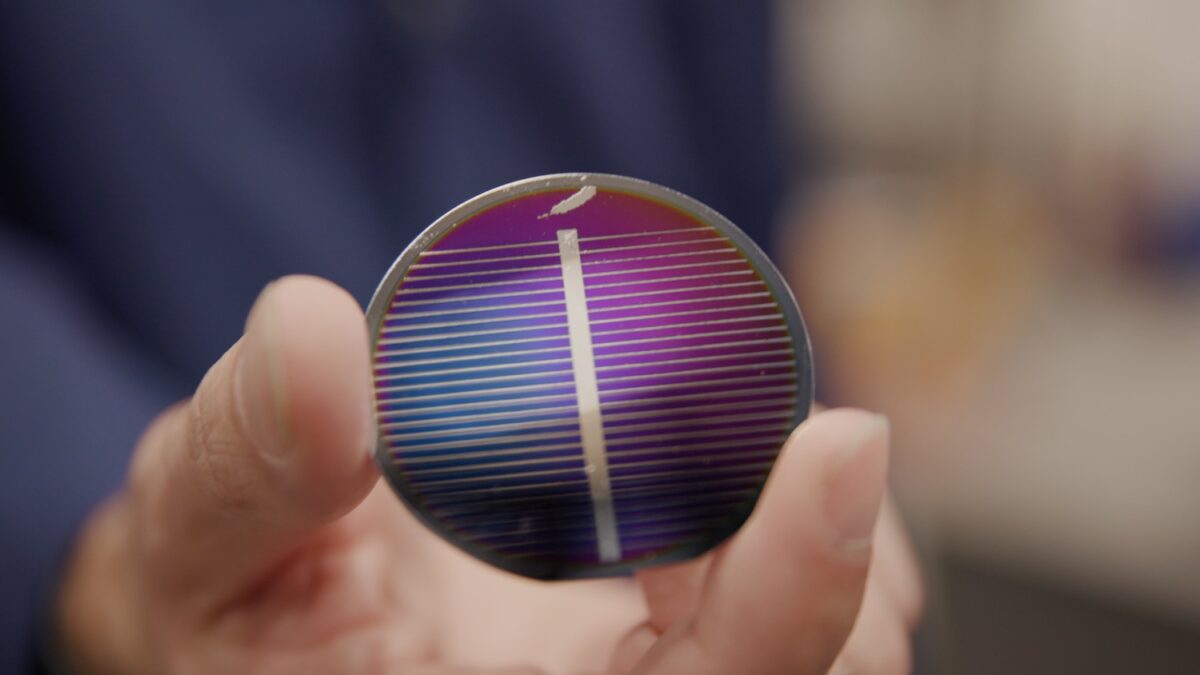From pv magazine global
Aerospace manufacturer and defense contractor Blue Origin announced it received $35 million in funding from NASA to develop the company’s technology to produce solar cells from lunar regolith.
Lunar regolith is made of dust, broken rocks, and other related materials and is present on the Moon, Mars, and Earth.
“Based on a process called molten regolith electrolysis, the breakthrough would bootstrap unlimited electricity and power transmission cables anywhere on the surface of the Moon,” Blue Origin said in a statement. “Today’s investment will result in a demonstration of autonomous operation in a simulated lunar environment by 2026.”
The technology of the company owned by Jeff Bezos consists of a scalable and contactless process for melting and moving molten regolith. It consists of a reactor that produces iron, silicon, and aluminum through molten regolith electrolysis via regolith simulants. The system uses electrical current to separate those elements from oxygen.
“Our proprietary transport subsystem moves and separates molten material at temperatures above 1600 C in a controlled and power-efficient manner while withstanding the high-temperature, corrosive environment,” Blue Origin said in a statement released in February. “Molten regolith electrolysis extracts iron, then silicon, and finally aluminum by passing a current through the molten regolith. The rising oxygen bubbles in one of our reactors show metals and metalloids being separated from oxygen. Our reactor geometry, metal extraction approach, and materials selection will enable sustained lunar operations.”
The company claims this process enables the production of silicon with a purity of 99.999%, as well as that of highly resistant solar glass by utilizing only molten regolith electrolysis byproducts.
“Blue Origin’s goal of producing solar power using only lunar resources is aligned with NASA’s highest priority Moon-to-Mars infrastructure development objective,” the company said.
The first research conducted by NASA for the development of solar cells from regolith dates back to 2005. This work provided a conceptual design for a solar-powered robotic rover able to build solar cells directly on the lunar surface.
“The lunar surface possesses both the elemental components needed for the fabrication of silicon solar cells and a vacuum environment that allow for vacuum deposition of thin film solar cells directly on the surface of the Moon without the need for vacuum chambers,” the paper reads.
The University of Houston built the first silicon and cadmium sulfide/cadmium telluride thin film photovoltaic diodes deposited on lunar regolith substrates in 2005. “The fabricated solar array is like a macroscopic version of an electronic device on a chip,” the scientists said. “The chip must be insulating so that the different elements can be made and then connected together in appropriate circuits.”
Estonia’s Tallinn University of Technology (TalTech) is currently also working on the development of solar cells from regolith. Last year, it unveiled a sandpaper-like solar cell relying on a monograin-powder technology. The device consists of thousands of small crystals, with a diameter of 50 micrometers, embedded into a polymer in one continuous layer.
“To complete the solar cell these microcrystals are coated with a buffer and window layers,” TalTech said in a statement. “In this way, each crystal works as a small individual solar cell and generates electricity.” It also said low-cost roll-to-roll techniques may be used to produce cells and panels.
This content is protected by copyright and may not be reused. If you want to cooperate with us and would like to reuse some of our content, please contact: editors@pv-magazine.com.









By submitting this form you agree to pv magazine using your data for the purposes of publishing your comment.
Your personal data will only be disclosed or otherwise transmitted to third parties for the purposes of spam filtering or if this is necessary for technical maintenance of the website. Any other transfer to third parties will not take place unless this is justified on the basis of applicable data protection regulations or if pv magazine is legally obliged to do so.
You may revoke this consent at any time with effect for the future, in which case your personal data will be deleted immediately. Otherwise, your data will be deleted if pv magazine has processed your request or the purpose of data storage is fulfilled.
Further information on data privacy can be found in our Data Protection Policy.